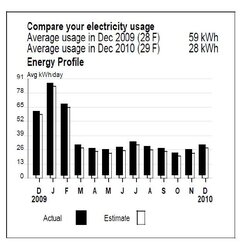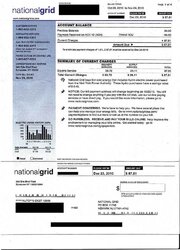Well, I got my first electric bill (Nov. - Dec. period of 28days) since burning wood 24/7 with electric heat/pump turned off. It's been a little colder and windy that I can remember in past nov - dec periods.
BTW-
<2100 sf well insulated ranch, wood stove in finished basement, vented through supply ducts, return air to stove room
<16 year old 4 ton heat pump with electric resistance backup heat
<Stove/chimney is in my signature
<wood costs only my time, tools and other expenses
I used 1185 KWH/KW less than last year. Taking out fixed costs for electric service, my variable cost is $0.053247 per KWH/KW, for a total of $63.10 or $2.25 per day.
I feel this is probably highly conservative due to recent low temps and will keep tracking the costs and hopefully will have more of a $ return.
Does anyone have any data to share, thoughts or maybe a link to a similar thread?
BTW-
<2100 sf well insulated ranch, wood stove in finished basement, vented through supply ducts, return air to stove room
<16 year old 4 ton heat pump with electric resistance backup heat
<Stove/chimney is in my signature
<wood costs only my time, tools and other expenses
I used 1185 KWH/KW less than last year. Taking out fixed costs for electric service, my variable cost is $0.053247 per KWH/KW, for a total of $63.10 or $2.25 per day.
I feel this is probably highly conservative due to recent low temps and will keep tracking the costs and hopefully will have more of a $ return.
Does anyone have any data to share, thoughts or maybe a link to a similar thread?





